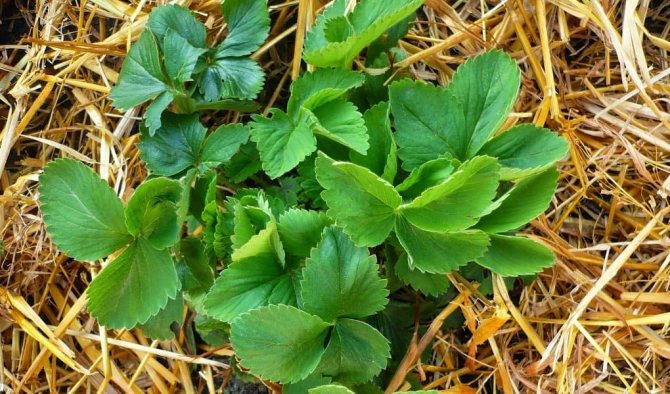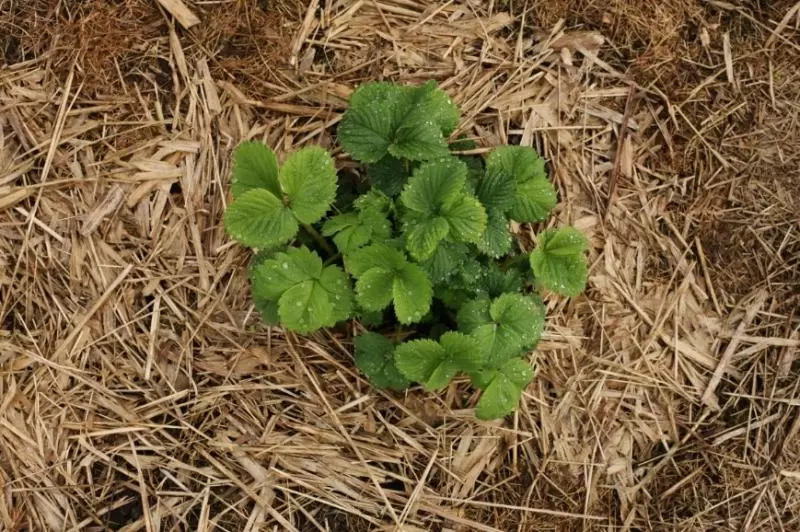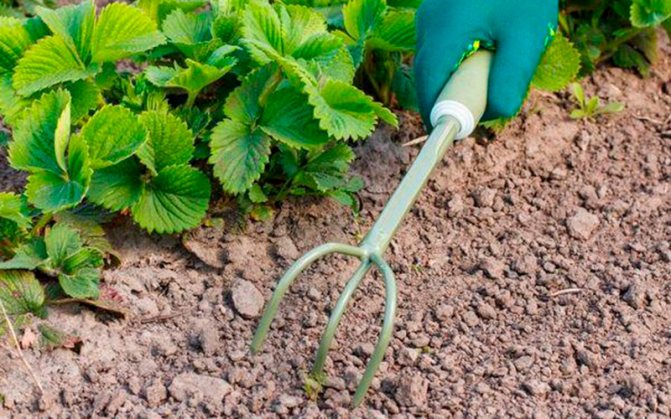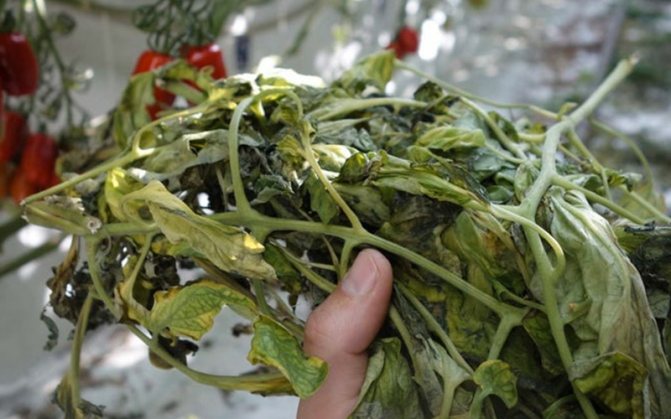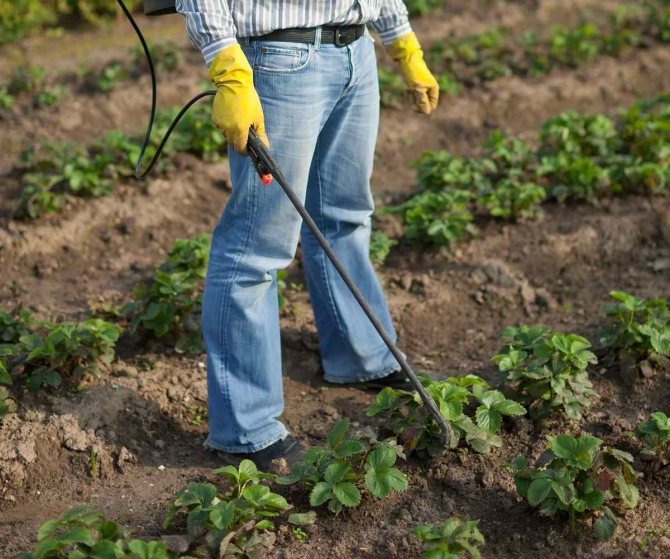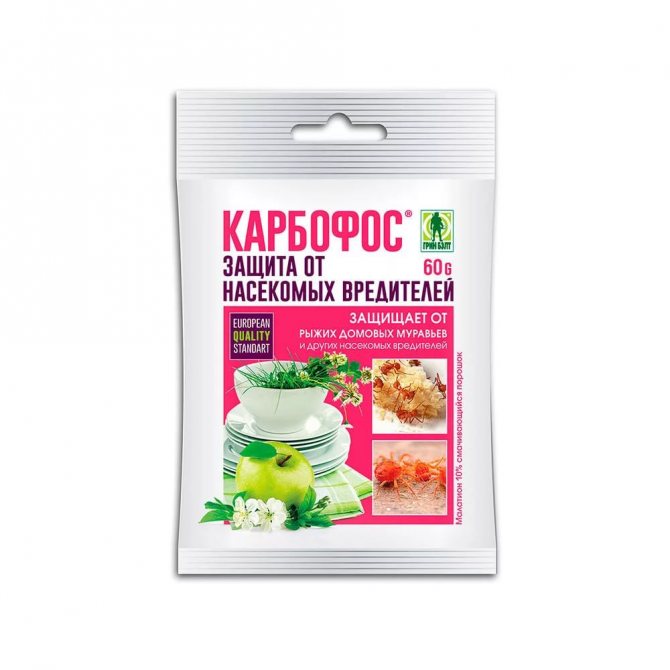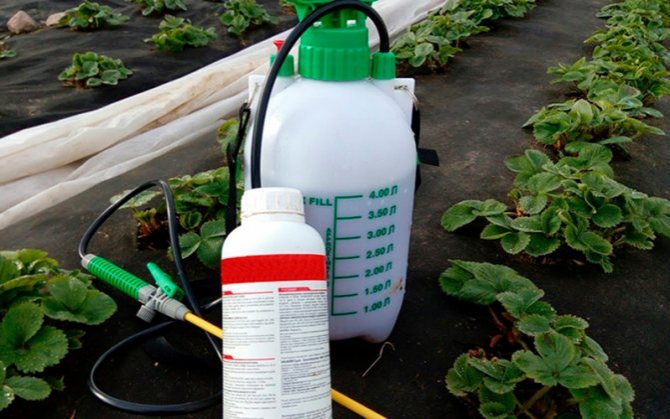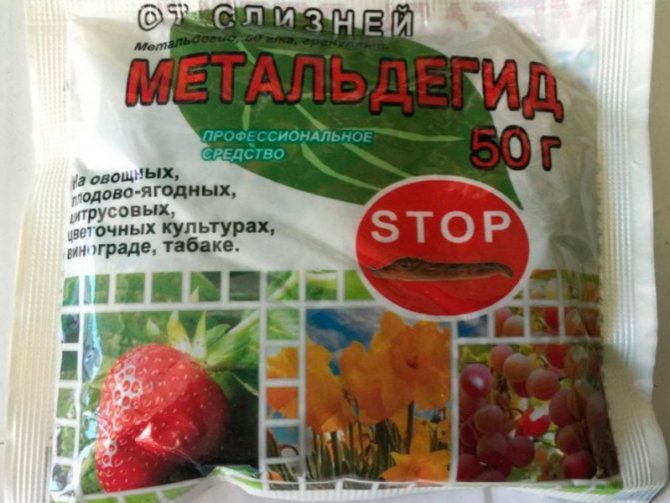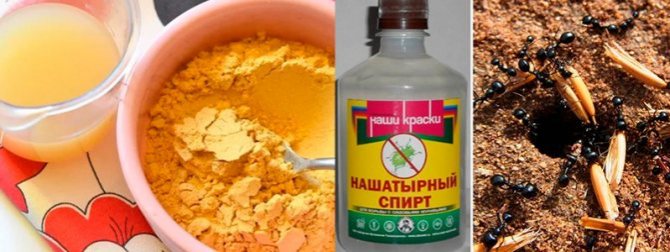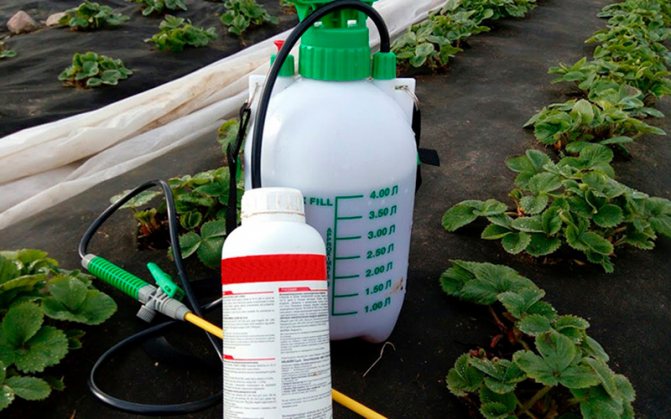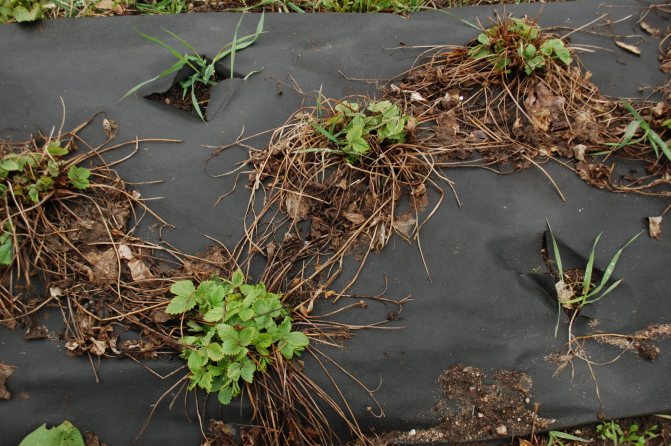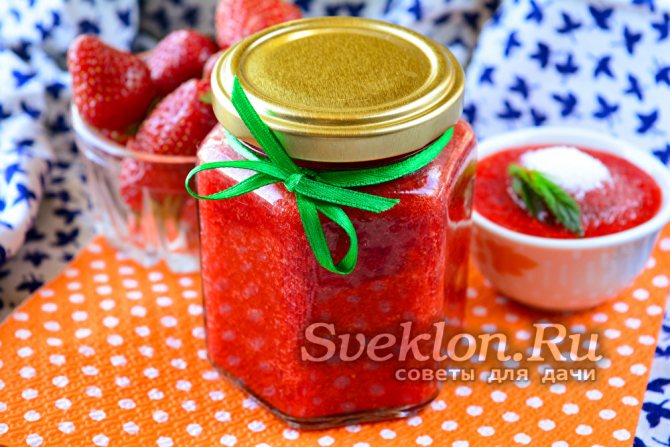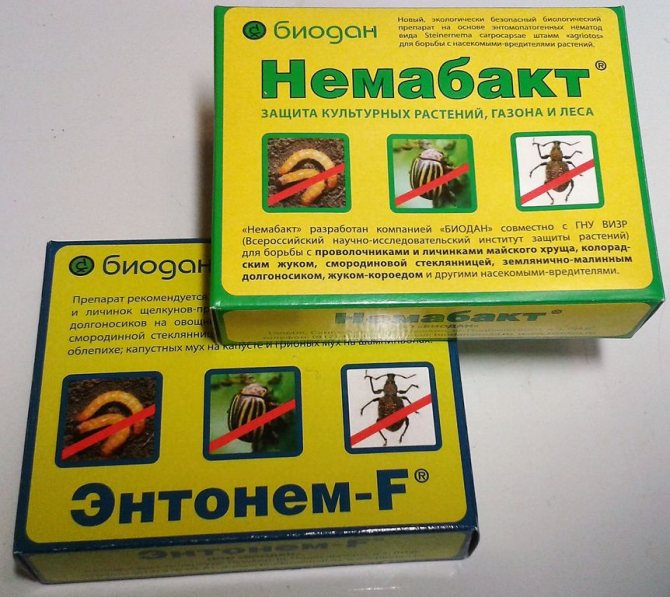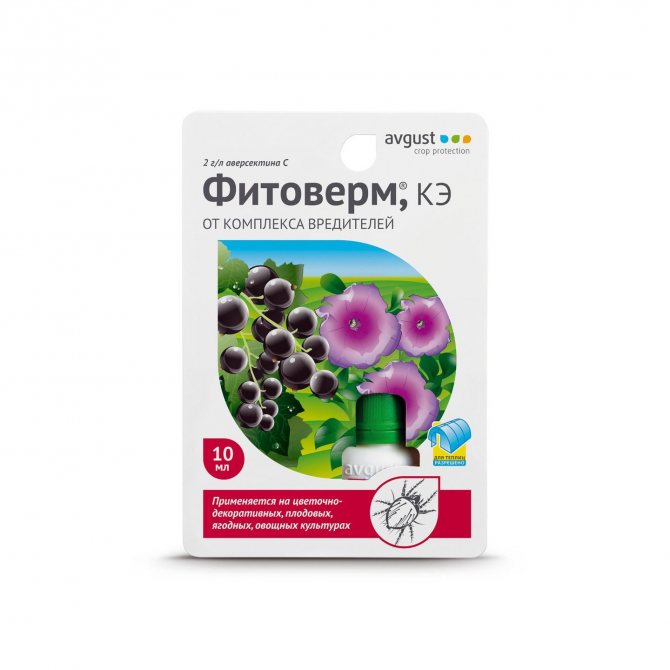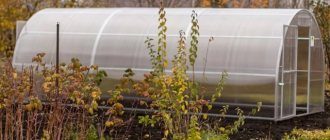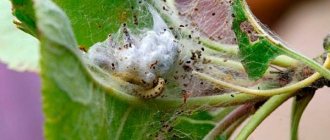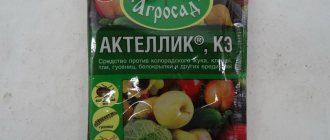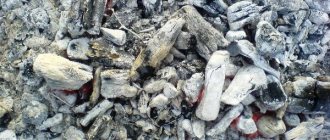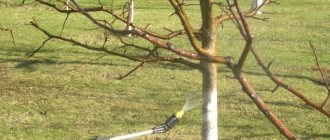Garden strawberries are extremely tasty, but easily susceptible to disease and pest attacks. In order to please the harvest next summer, Victoria needs to be processed in the fall. Many gardeners prefer to do this in the spring, but they make a mistake. Why processing strawberries in the fall from pests and diseases is important and how to do it, we will tell in our article.
Repairing strawberry varieties are more susceptible to diseases than other types of berry bushes. They must be treated with chemicals, folk remedies 2 times a year: in spring and before hibernation. The rest of the varieties are only in August-September.
Preparing for winter
If, after picking berries, you just throw a strawberry garden until next spring, then pests can start under fallen or diseased leaves, and weak bushes in early spring will pick up some kind of disease, which will then spread throughout the garden. Therefore, every autumn it is imperative to prepare the plants for winter.
- Cutting off leaves - Any sick or old leaves must be cut off and thrown away. In parallel, it is advisable to cut off unnecessary antennae. The less excess is, the easier it will be for the strawberries to endure the winter. But if seedlings are required for the next season, then the antennae are not touched until spring.
- Pruning bushes - The opinion of gardeners is divided about this procedure. Some advocate pruning the bushes so that the strawberries have a rest, while others believe that they do not need to be touched. Therefore, in this case, you can conduct an experiment by cutting off one half and leaving the other as it is. In the summer you can see which half of the crop has increased.
- Weeding - It is imperative to weed all the land from weeds so that next year their number will be reduced significantly. You need to pull out together with the roots, and then carefully loosen the ground.
- Repotting - The bushes need to be renewed every three years. For this, the first rosette is transplanted with full leaves and roots. This procedure can be done not only in the fall, but also in the spring.
- Top dressing - Of course, the most important top dressing is spring dressing. But in the fall, you also need to feed, but this should be done carefully, since there are substances that will prevent strawberries from hibernating normally. For example, nitrogen, which stimulates the growth of greenery on plants. It is enough to give a weak solution of chicken manure, dissolving one part in ten liters of water. It can be replaced with manure or humus. As a last resort, sprinkle the entire soil with wood ash, which will not only fertilize the soil, but also protect it from insect pests.
- Shelter - In regions where winters are very changeable or frosty, the entire bed must be covered in any way: dry raspberry sprigs, tops, spandbond, agrotex, spruce or pine needles. The main thing is that the material allows air to pass through. It is undesirable to cover with plastic wrap, otherwise pathogenic bacteria may develop under it. For the same reason, experienced gardeners do not recommend using sawdust as mulching. Mulching with straw is fine, but you should take into account that mice can start in it, so you should install an ultrasonic rodent repeller or poison for them nearby.
The more thoroughly the processing is carried out in the fall, the easier it will be for the plant to bear fruit in the next season, and the gardener will be able to take a break from the fight against pests and diseases.
Right time
When planning processing strawberries in the fall, you need to understand that it is best to do this in August and September. Knowing about the time frame is good, but it is more important to navigate the state of the leaves and the plant as a whole.
Before wintering, all plants slow down the processes of vegetation and the creation of new shoots and leaves. Old leaves rarely survive until spring, drying up and freezing, which is why they are pruned in autumn.
Another important factor when choosing the timing of the treatment is to carry it out before the start of frost. This is important both in terms of vegetation (pruning) and in terms of preparing the beds for winter. Improper protection of plants in latitudes with negative temperatures can lead to their death in frost.
Diseases
The most common diseases in strawberries are: black and gray rot, brown and white spot, powdery mildew. Their occurrence is easier to prevent than to cure. Therefore, every autumn it is imperative to spray the plants against a disease that is more common in this area or with which the greens are already infected.
Powdery mildew
To protect the planting or get rid of this fungus, it is enough to treat everything with one of any drugs:
- Colloidal sulfur - Dissolve 100 grams of sulfur in a ten-liter bucket of warm water, mix well and water the entire soil.
- Copper sulfate - In a ten-liter bucket of liquid, 5 grams of copper sulfate are diluted, then a piece of grated laundry soap is poured. Mix everything well and spray the bushes in early autumn.
- Potassium permanganate solution - So many grains of potassium permanganate are dissolved in a bucket so that the water is light pink, after which the bushes are thoroughly sprayed. If you overdo it with the number of grains, then the leaves can get burned.
- Sulfaride - With its help, you can prevent the appearance of powdery mildew, for this, 2 tablespoons of this drug are dissolved in a bucket of water. Then, with the help of a spray bottle, all the leaves and stems of the strawberry are treated.
- Topaz - This drug is very effective and fast. For this, one ampoule of this drug is poured into a ten-liter bucket of warm liquid, after which all parts of the plant are sprayed. This procedure is carried out in calm and cloudy weather.

Rot and mottling
You can get rid of these devastating diseases using recipes:
- Nitrofen - With its help, you can not only protect plants from diseases, but also get rid of ticks and aphids. Processing is carried out in October, shortly before the onset of winter. To do this, dilute about 150 grams of dark brown paste in a bucket of water. This tool is used to treat not only plants, but also the ground around them. Then rot and spotting will not be able to take root here.
- Universal remedy - In a ten-liter bucket of warm water, dissolve two tablespoons of ash, vinegar, three tablespoons of sunflower oil, pour half a liter of liquid soap. Stir well, spray not only the plants, but also the ground around them.
- Copper oxychloride - It is sprayed with it after harvest. To do this, dissolve one tablespoon of copper oxychloride in a bucket of warm water.
Top dressing


Fertilization is called fertilizing, it is carried out almost all year round, including in the fall.
Strawberries respond well to all types of organic fertilizers:
- Wood ash;
- Mullein;
- Horse dung;
- Humus;
- Chicken droppings.
However, it will not refuse inorganic at all, it will be happy with potassium salts or superphosphate.
You need to be very careful with feeding. Incorrect concentration of fertilizer or incorrect application can be fatal to plants. Horse manure, mullein and humus can be applied to the ground when a new bed is formed, or spread out in pieces between bushes.
Insect pests
Many insects want to feast on sweet berries, delicious leaves and nectar from flowers. In large quantities, they are able to completely destroy the strawberry bush. Therefore, it is necessary to carry out autumn processing from them so that wintering insects or their larvae cannot survive the winter.
- Whitefly - This small pest will help you quickly get rid of drugs: "Aktara" and "Intavir". Before use, they are dissolved in liquid in accordance with the instructions on the package.
- Weevils - Gardeners most often get rid of them with the help of a decoction of wormwood. To do this, collect a kilogram of wormwood, boil it in a four-liter pot of water for about ten minutes. Then it is diluted with five liters of liquid, a little soap is added and all parts of the greens are sprayed. From drugs work well: Fitoverm, Iskra-Bio, Aktellik.
- Strawberry mite - Spraying with a solution of potassium permanganate will help get rid of such insects that are almost invisible to the eye. Only this solution should be light pink and hot. Potassium permanganate can be replaced with copper sulfate; for this, 300 grams of this substance are diluted in a bucket of water. From folk remedies, one very effective tincture of garlic and onion peels helps. Only this husk is recommended to be infused in water for about five days. Then it is filtered and sprayed. Chopped garlic can be used in place of the husk.
- Nematoda - This is the most dangerous pest in the form of millimeter worms of light brown color, from which the plant can no longer be saved, it remains only to pull out the bushes and burn it. In parallel with the infected, two neighboring healthy ones are pulled out and also burned. And the rest of the plants and the whole land are cultivated with means: "Vitaros", "Urea", "Skor". Nothing has been planted on this land for about three years.
- Slugs and snails - They are first harvested by hand so that none are left on the leaves, then the soil around the plants is covered with ash or spruce needles. Of the drugs used "Metaldehyde", whose granules in small quantities are laid out next to the bushes.
- Aphids - A decoction of wood ash helps to get rid of it best. To do this, boil 300 grams of ash in a two-liter saucepan for about half an hour, then filter, dilute with a bucket of water. For the best effect, add grated soap, then pour over all the strawberries. Of the drugs, you can use "Nitrofen".
- Thrips - First, the diseased greens are pulled out and burned away from the site, then the entire top layer of the earth is removed, in which the larvae can accumulate. Then everything is thoroughly watered with a decoction of chopped garlic or yarrow. Then the bed is covered with new earth.
How to properly prune leaves
First, in the fall, strawberry beds should be freed from old and diseased leaves, leaving only new leaves for the formation of peduncles. When pruning on a bush, you do not need to remove all the old leaves. Today, a different technique is used to increase the future harvest of berries.
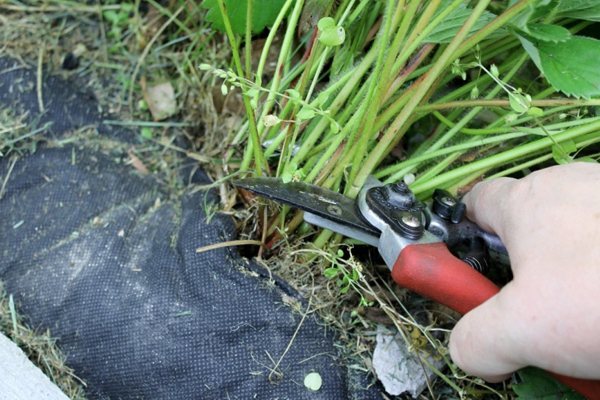

You cannot cut off all the leaves from the bush, as this will greatly weaken the plant during a period of complete dormancy. Strawberries will expend energy on growing new leaves, and not on the formation of flower stalks during the dormant period.
For reference!
Do not pick off the leaves with your hands, as this will damage the stem and roots.
Pruning should be done with sharp pruners or scissors in dry weather in the morning or evening.
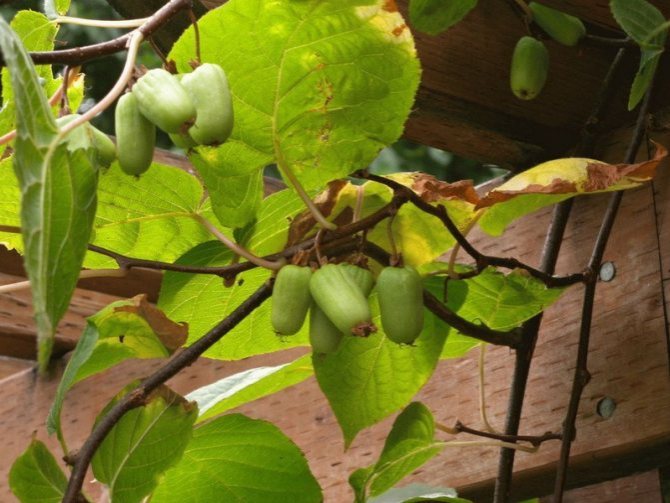

Processing time
Before starting the autumn processing, you must first take into account the variety of strawberries, since they bear fruit in different ways. Someone earlier, some later, and some even twice a season. If fruiting lasts until the end of August, then processing is carried out somewhere in October. If the harvest is over in July, then it is processed at the end of August, without waiting for the air temperature to drop to zero.Experienced gardeners recommend mulching the berry crop for the winter so that it does not weaken from severe frosts or from lack of snow.


Care for remontant strawberries
The compulsory strawberry care includes:
- Fertilizing crops.
- Competent watering.
- Loosening of the soil followed by mulching.
- Pest control measures.
- Mustache trimming.
How to water strawberries
Strawberries of this variety need moisture more than regular berry crops. Watering cannot be ignored if it is + 30 ° C outside. At the time when the fruits ripen, the soil should be moistened by three centimeters, no less. Mulching can be done to retain moisture.
Soil loosening
After any moistening of the soil, it is necessary to loosen it. This will improve the condition of the root system, open access to oxygen. Only this must be done carefully so as not to damage the fragile antennae.
Soil renewal


Any gardener at some point learns that it is wrong to grow a crop on the same piece of land for several years. This is explained by the fact that each plant consumes certain elements and substances from the soil, which greatly impoverishes it in these elements.
Other plants will feel just wonderful in this place, making it possible to recover in the soil the content of substances that the first plant consumed.
When renewing the soil, 2 techniques are used:
- Deep beds. Every 2-3 years, long beds with a depth of half a meter are pulled out in the ground, in which the earth is thoroughly mixed with humus and other fertilizers. A completed bed filled with renewed soil is usually at ground level;
- Raised beds. The soil preparation technology is no different from the previous version, but the beds are formed above ground level.
Regular soil renewal will allow you to have high yields from year to year, and also to protect yourself from any parasites, part of the life cycle of which takes place in the ground.
Preparations "2 in 1" and "3 in 1"
This category includes recipes that can make our work on strawberry processing easier, allowing us to do just one spray from several problems:
- Tiovit Jet. The bag contains a mixture of fungicide and acaricide, that is, the drug is effective against fungal diseases and ticks, it will not work on insects. The content of one package (15 g) is diluted in 5 liters of water. Effective in a narrow temperature range + 20 ... +28 ° C.


Tiovit Jet - one remedy for both diseases and ticks
- 3-in-1 strawberry rescuer. The set includes insectoacaricide, fungicide and growth stimulant. All three drugs are in different ampoules, but compatible. They are poured alternately into 10 liters of water and mixed. With one treatment, you get rid of diseases and all kinds of pests. It is necessary to process it during the growing season, that is, at temperatures above + 10 ... +15 ° C, the mixture is effective even at elevated temperatures.


Strawberry rescuer is three ampoules with compatible drugs
- Homemade mixture of insectoacaricide Carbaphos and fungicide Skor. The drugs are sold separately, but gardeners have already tested them for compatibility and are recommending them for use. In 10 l of water, 60 g of Karbofos and 2 ml of Scor are dissolved. It must be processed at temperatures above +15 ° C and below +25 ° C.
Video: processing strawberries in the fall by the Rescuer "3 in 1"
Useful Tips
A few helpful tips from seasoned gardeners will tell you what to do with strawberries in the fall.
- Use horse sorrel to feed strawberries. Collect the grass, pour boiling water over and leave for 2-3 weeks, the path decomposes. Watering the entire garden with such fertilizer will bring incredible benefits.
- Observe the proportions when applying fertilizers, medicinal solutions. If the concentration is exceeded, the bushes will burn.
- Before transplanting Victoria to new sites, sow mustard powder on the soil of the future flower bed. It will increase the fertility of the land.
- For the best possible yield, trim off any excess tendrils on the bushes. They take a lot of energy away from the culture.
- Use mulch in summer, spring. The cover reduces the growth of weeds.
- Sprinkling sawdust on the soil under strawberry seedlings is possible on leached chernozems, on acidic soils it gives the opposite result.
Now you know exactly what to do with garden strawberries in autumn, you can increase yields, show off to your neighbors and friends about a neat berry plantation. Turn the grooming process for Victoria into an annual routine. In this case, growing garden strawberries will seem simple and interesting.


